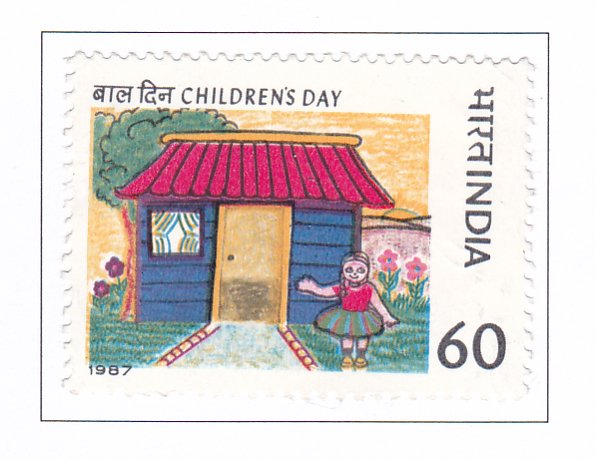Children’s Day

Technical Data
| Stamp Set | Children's Day |
|---|---|
| Date of Issue | November 14, 1987 |
| Denomination | 60 p |
| Quantity | 1,500,000 |
| Perforation | comb 13½ x 13 |
| Printer | Security Printing Press, Nashik |
| Watermark | No Watermark |
| Colors | Multicolor |
| Catalog Codes |
Michel IN 1121 Stamp Number IN 1183 Yvert et Tellier IN 936 Stanley Gibbons IN 1270 |
| Themes | Children | Drawings | Houses |
Commemorative Stamp Set: Children’s Day – A Child’s Right to a Home
Design Elements:
The stamp set includes images representing:
- Children in a Home: Depicting a nurturing and secure environment, symbolizing a child’s right to a safe and loving home.
- Symbol of Shelter: Such as a house or shelter, emphasizing the theme of providing homes for children.
- Children’s Day Tribute: Possibly featuring an image of Pandit Jawaharlal Nehru, whose birthday on November 14th is celebrated as Children’s Day in India.
Cultural and Historical Significance:
Children’s Day in India commemorates Pandit Jawaharlal Nehru’s love for children and his vision for their future. The theme “A Child’s Right to a Home” aligns with the United Nations’ Declaration of the Rights of the Child, emphasizing the importance of providing children with secure, nurturing environments to foster their development.
Usage:
These stamps serve to raise awareness about children’s rights, specifically their right to a home where they can grow physically, mentally, and socially in conditions of freedom and dignity. They also highlight ongoing efforts by governments and organizations to provide shelter to homeless children.
Importance of the Commemorative Stamp Set:
The stamp set symbolizes the commitment to ensuring every child’s fundamental right to a safe and loving home. It underscores the global initiative, marked by the United Nations’ declaration of 1987 as the International Year of Shelter for the Homeless, to address homelessness among children and promote long-term solutions.
Example of the Stamp Design:
Each stamp could feature:
- Imagery depicting children in diverse home settings, portraying security and care.
- Symbols representing shelter and protection, illustrating the theme of providing homes for children in need.
- Possibly, a portrait or silhouette of Pandit Jawaharlal Nehru, emphasizing his legacy and advocacy for children’s welfare.
Significance:
The commemorative stamp set serves as a reminder of the ongoing efforts to fulfill children’s rights globally, especially their right to a nurturing home environment. It encourages reflection on the challenges and responsibilities in ensuring every child’s well-being and development.
